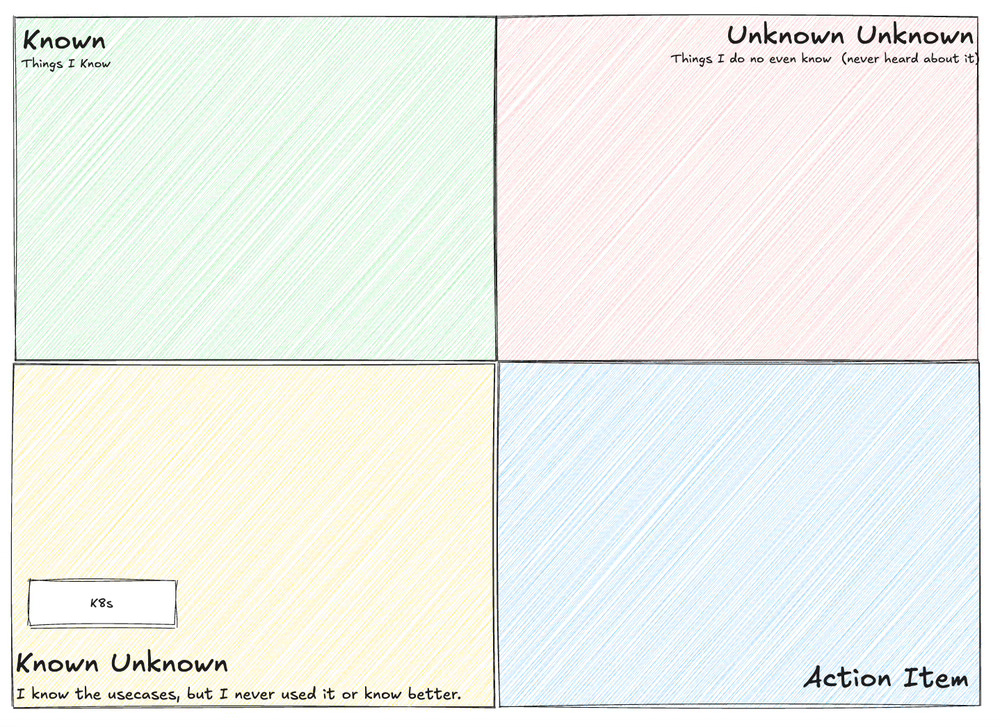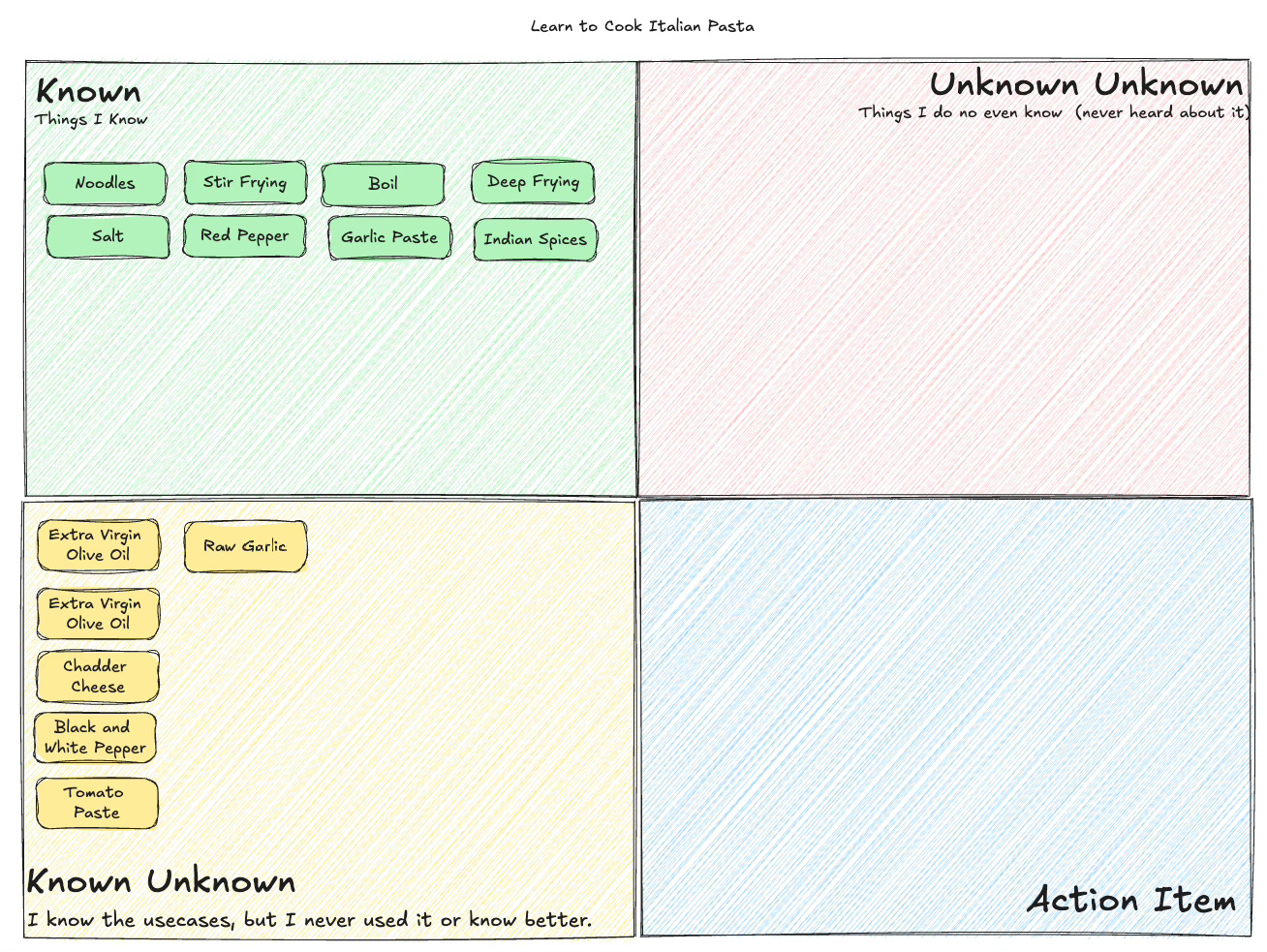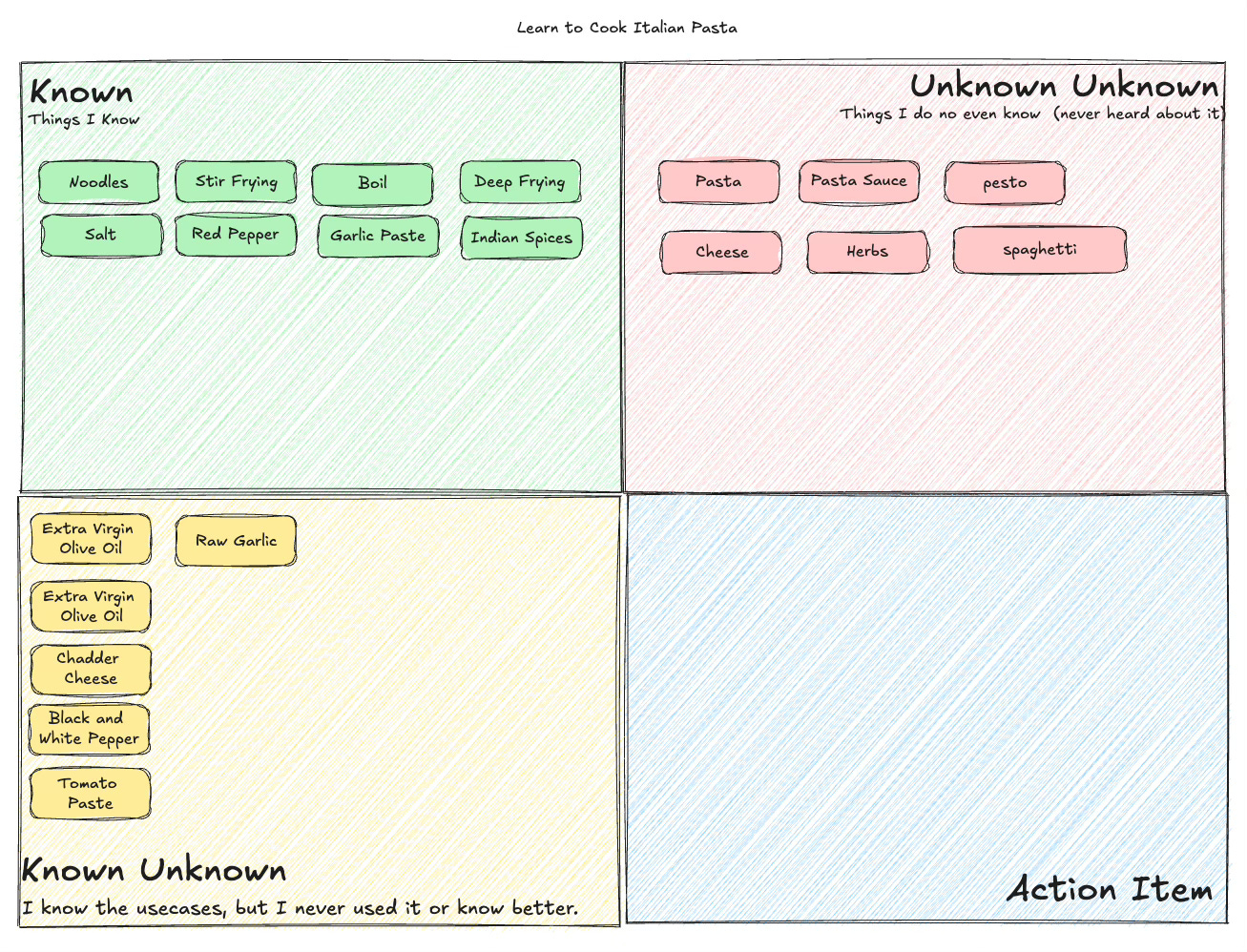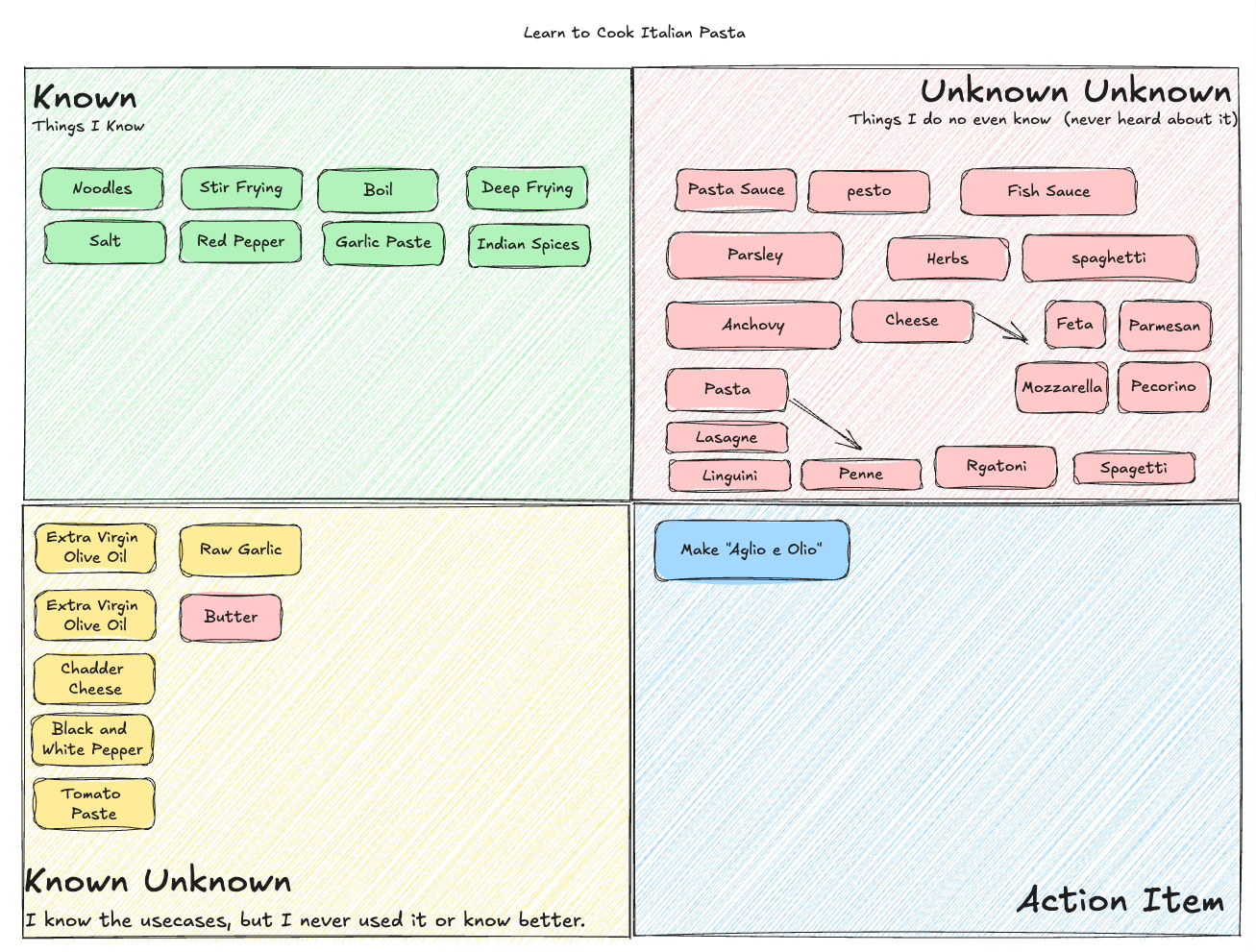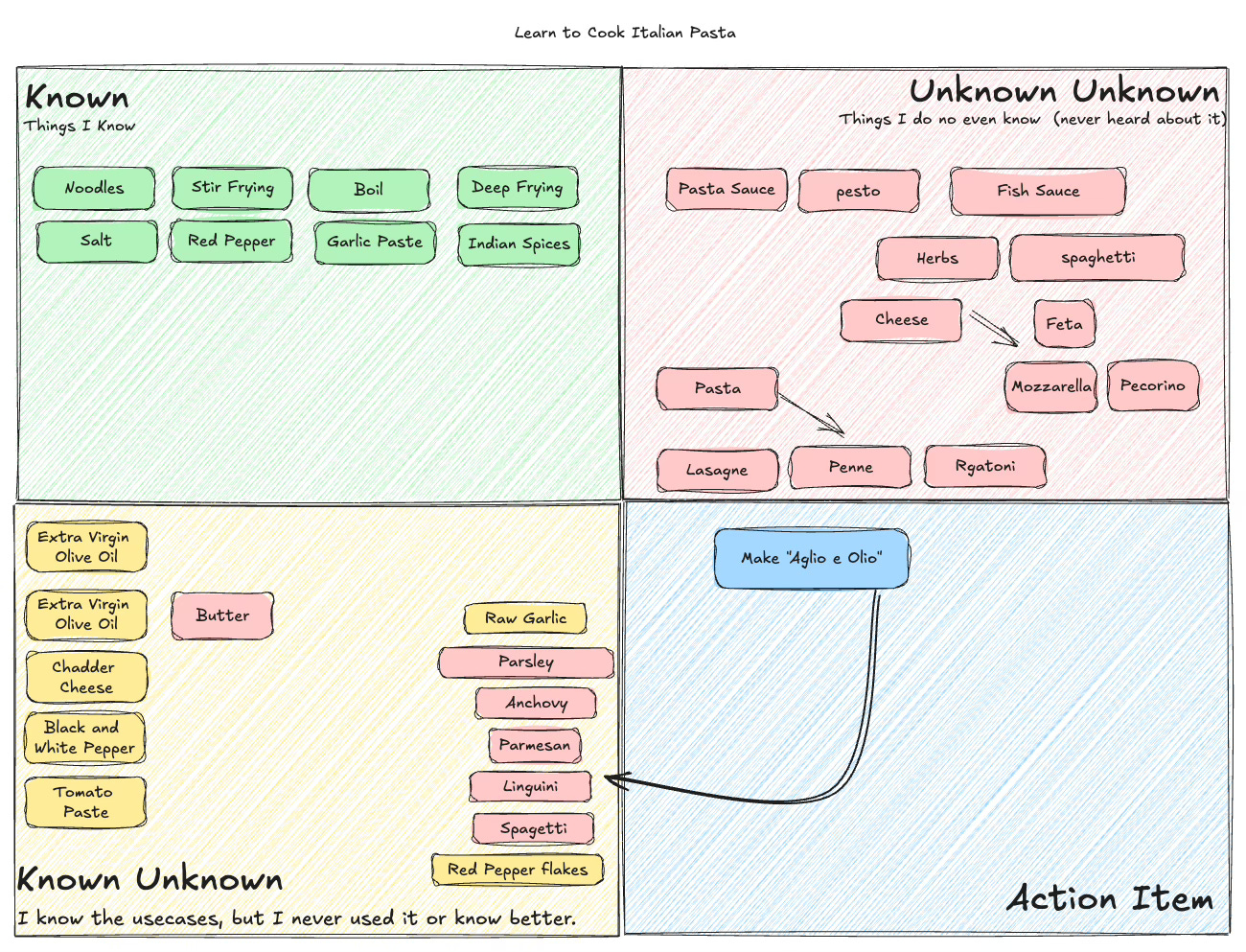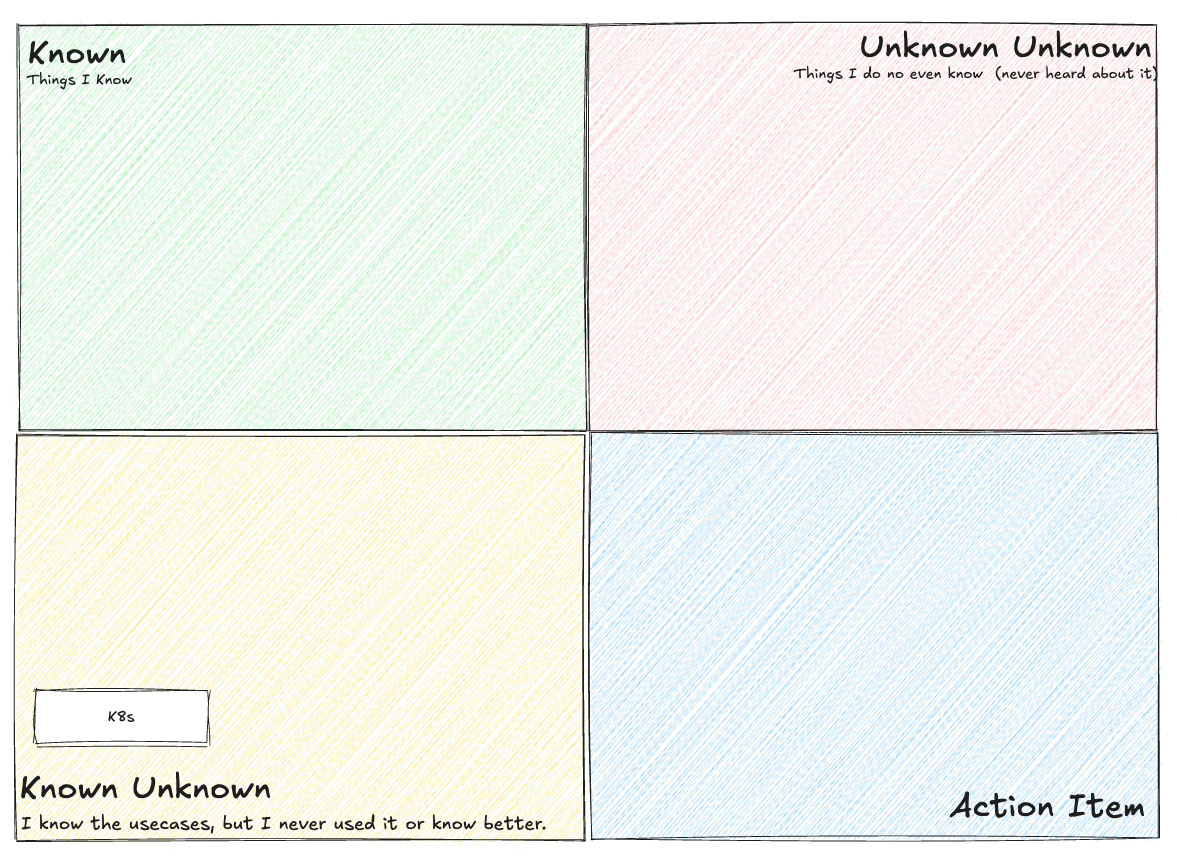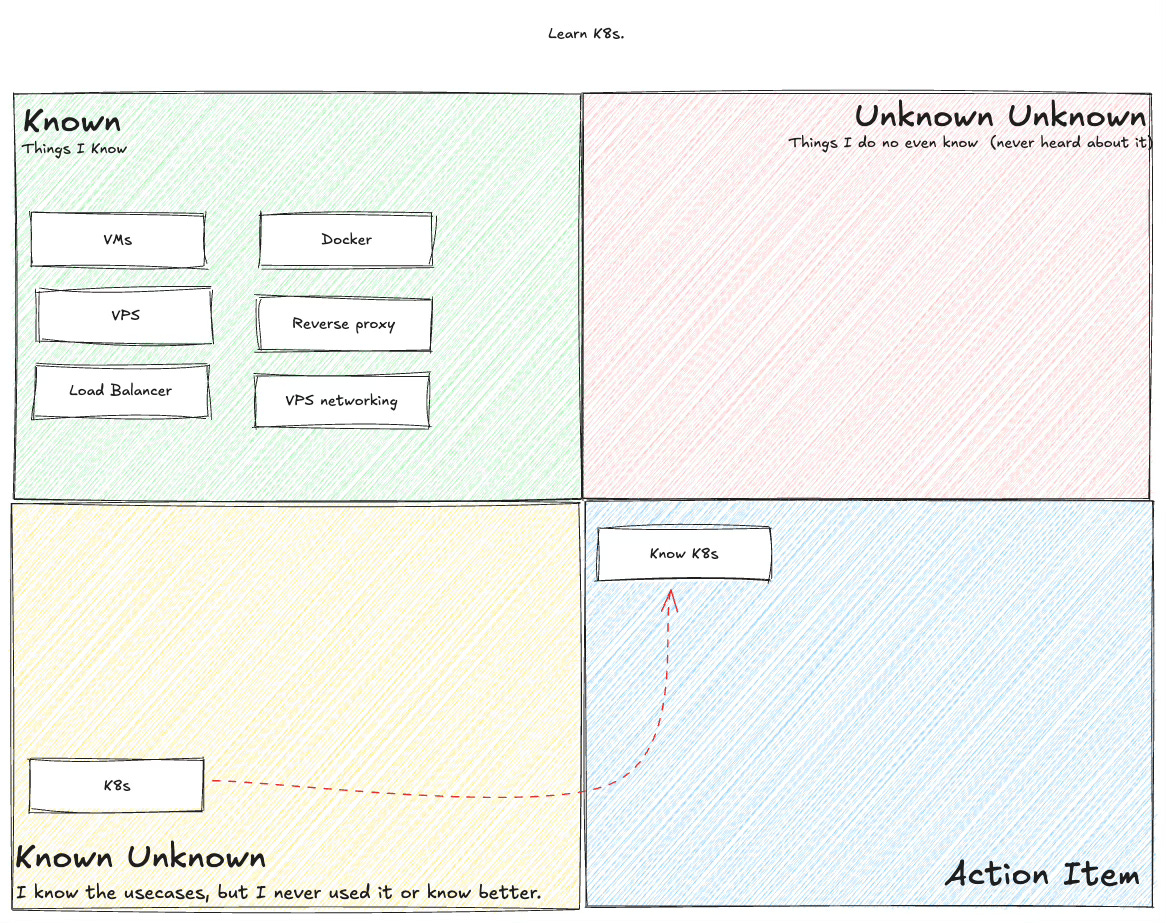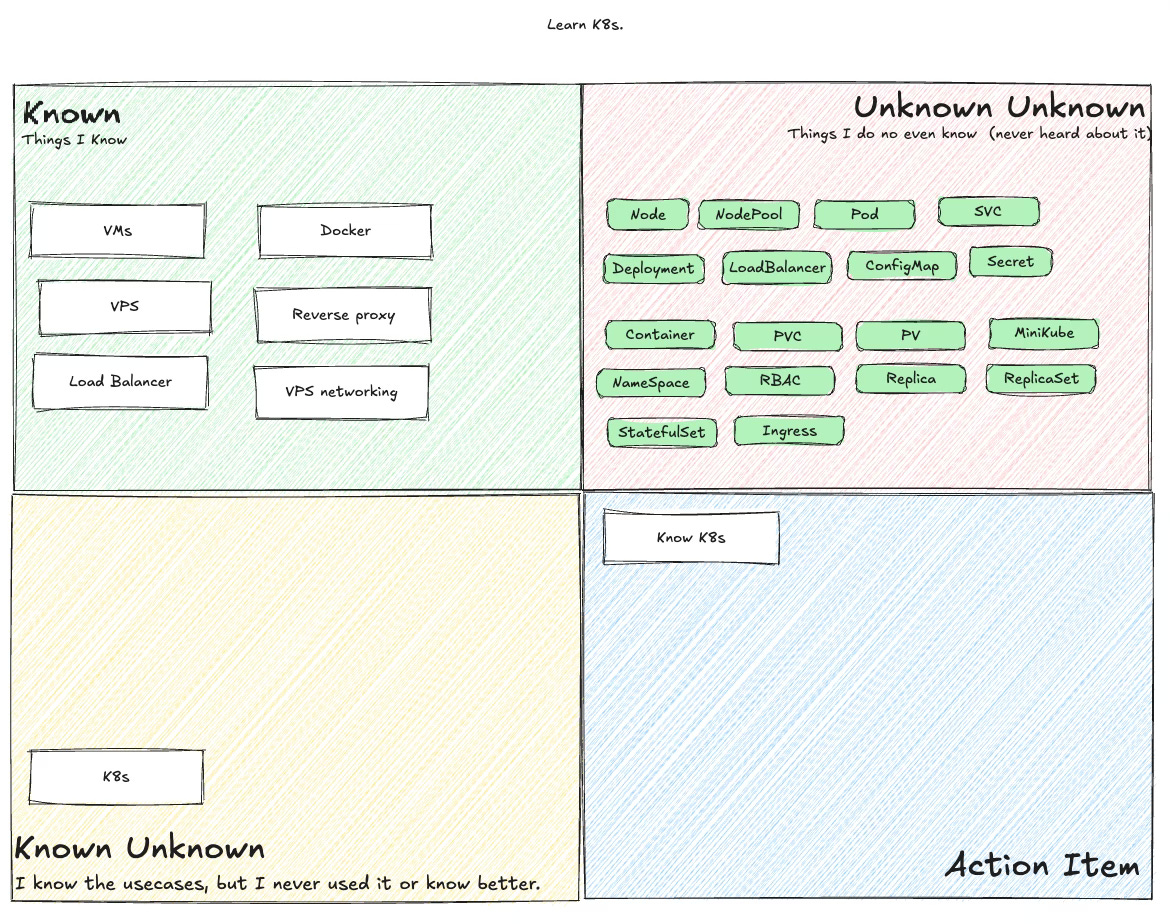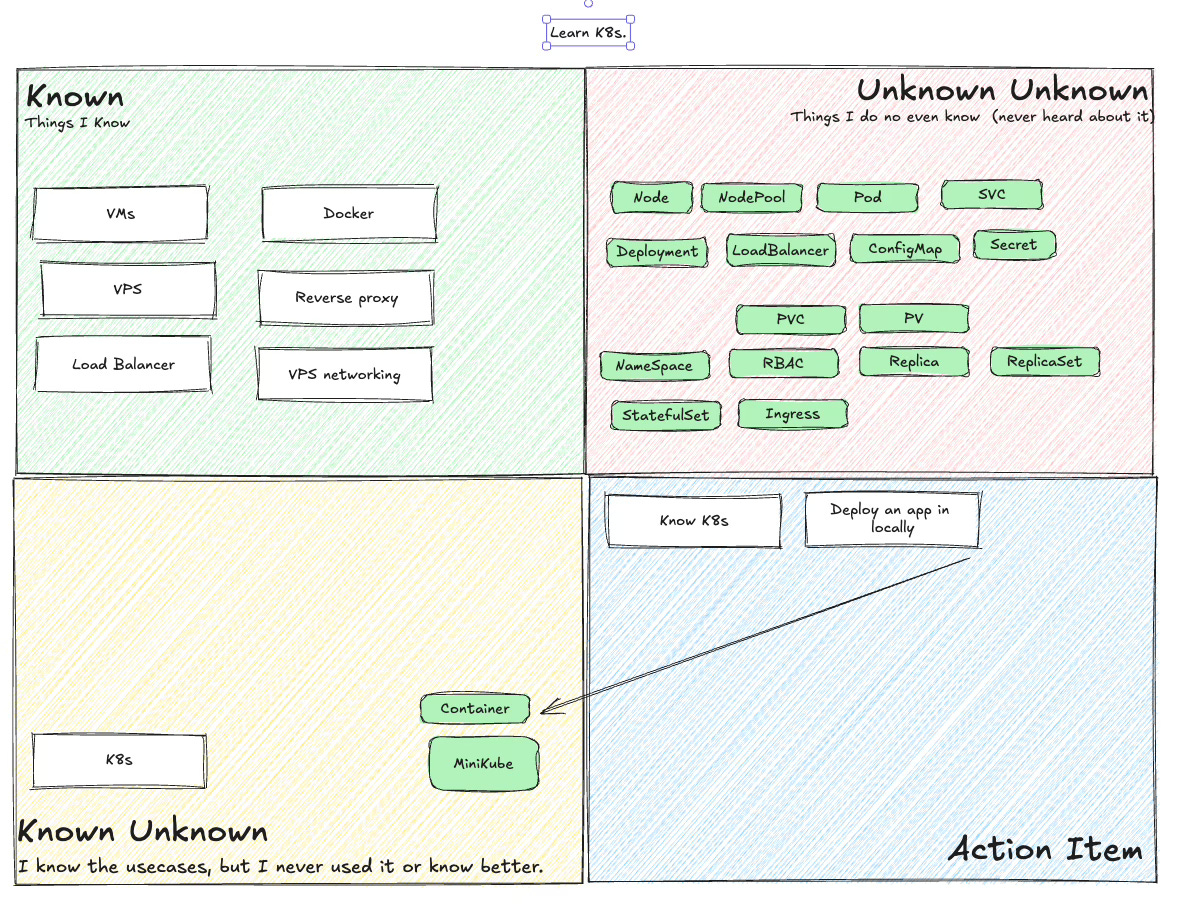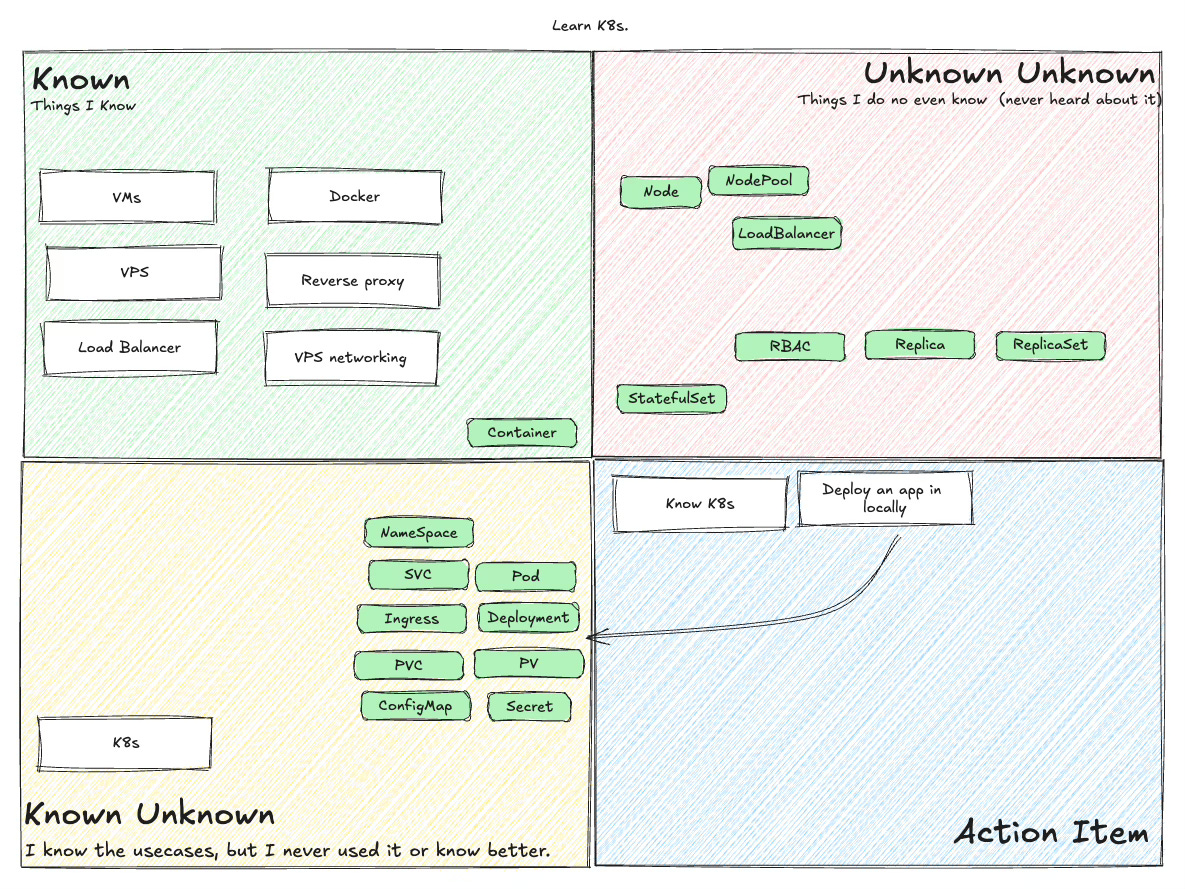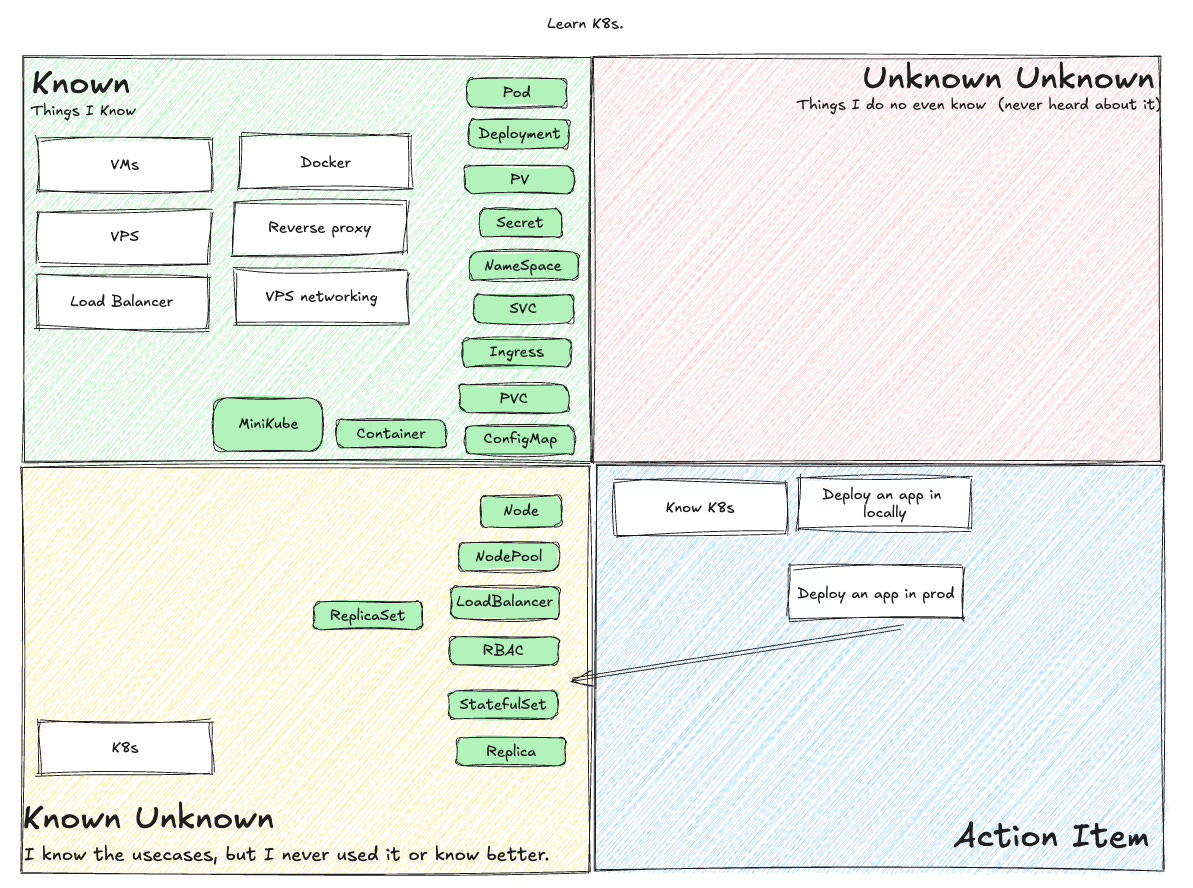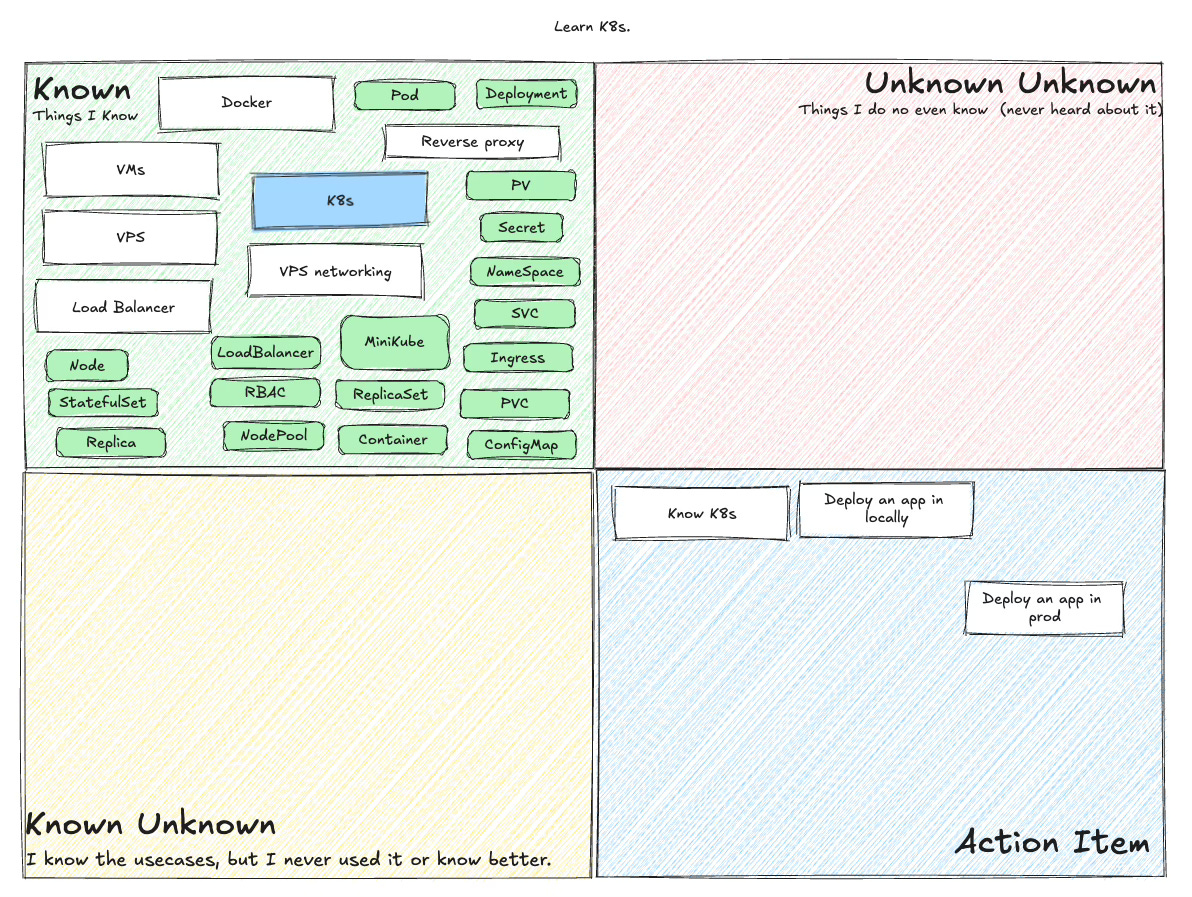From Unknown to Known: A Visual Learning Framework
Discover a structured and visual approach to learning new skills. From cooking pasta to mastering Kubernetes, this guide breaks down the process into manageable steps, helping me transition from unknowns to knowns efficiently.
Inception
Everything around us is some kind of problem statement. How do you cook, file your taxes, go to new places, make money, do a job, etc? Everything is some kind of problem, and solving problems is my hobby. Most of the time solving a problem consists same kind of things in different wrappers,
Know the root cause of the problem
Know how to solve the root cause
It's a consistently evolving flow, where we need to discover the root cause then we use our skills to fix the root cause, if we do not have the skills, either we hire/purchase the skill or learn it ourselves. I have written a separate blog on this topic. That can be found here.
For learning a new skill, I have been using a self-driven formula/process for a while. I never made it formalized until recently.
These are my 4 quadrants of solving problems and learning new Things. I have not found time to name it yet. Maybe soon I will find a name.
So How does it work?
I break down my stuff into 3 categories, 1 Action Item
Known: Things I already know well, used before. And Comfortable to reuse it in future with very short time to warm up period.
Known Unknown: Things I heard of, I know what it can do, I do not know how it can do, I know the top 1 or 2 features of it, I may have used it once or twice in the last couple of years. I need to sit down and spend some dedicated time with it to make myself familiar with it, warm-up time is long.
Unknown Unknown: I do not even know about these things. I have never heard of it. There are maybe used in the things I need to use or I am using now. But it's just never ever in my mind
Action Item: Things I need to do to move stuff from Unknown Unknown to Known Unknown and Known Unknown to Known.
Also, there is a special relationship here, The more things I know or hear about the easier it becomes to adapt to the Unknown Unknown. Because once we master the basic things, it's easier to reference from one place to another place or make it relatable. Example: If I know how to boil rice, it's easier to know how to boil pasta.
Let's see in action how it works!
Example 1: Learn to Cook Italian Pasta
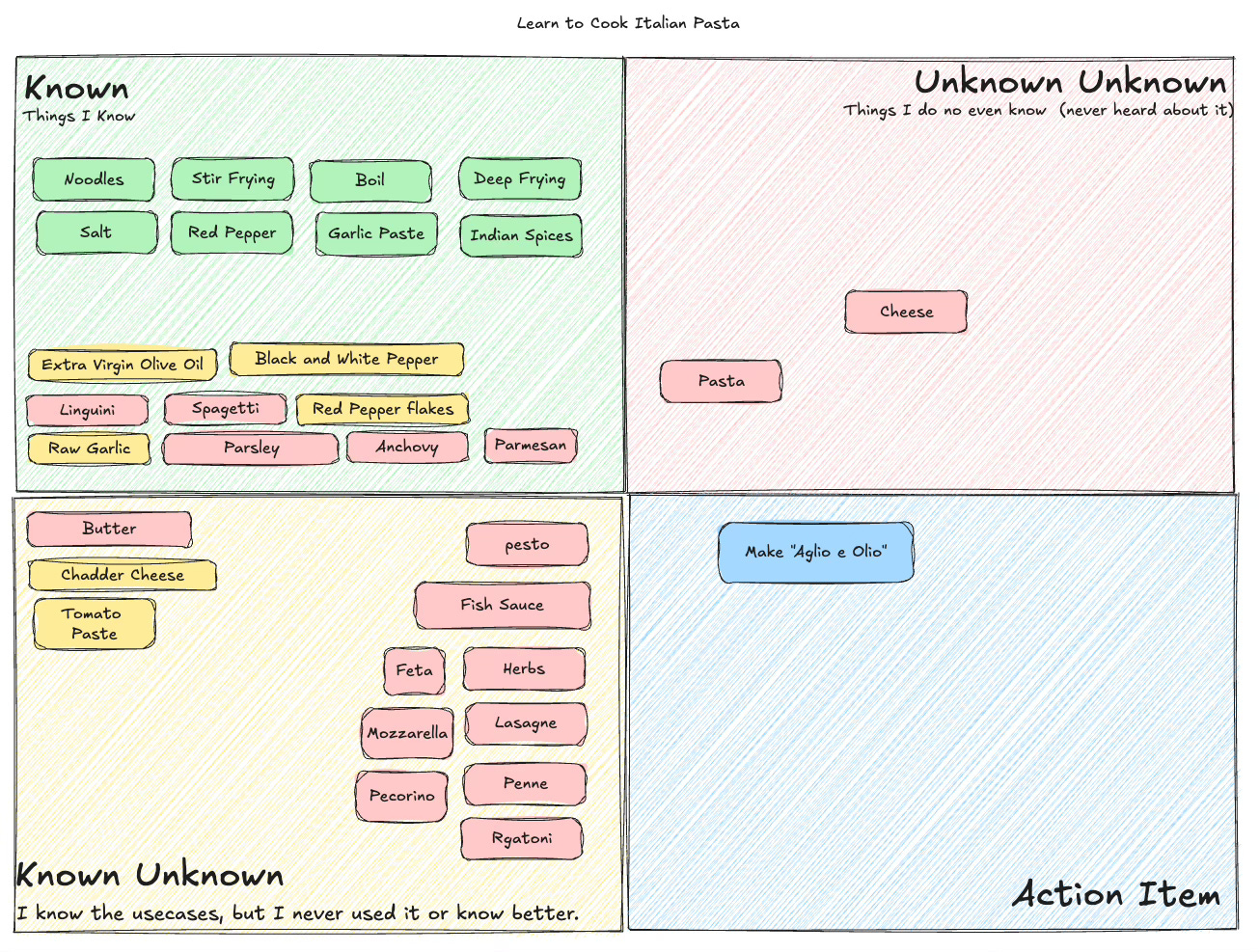
Example 2: Learn Kubernetes (k8s).
How do I use it?
Whenever I face a new problem or need to learn something new, I use this structured approach to break down the learning process into manageable action items. This method helps avoid feeling overwhelmed and allows for more efficient and effective learning.



